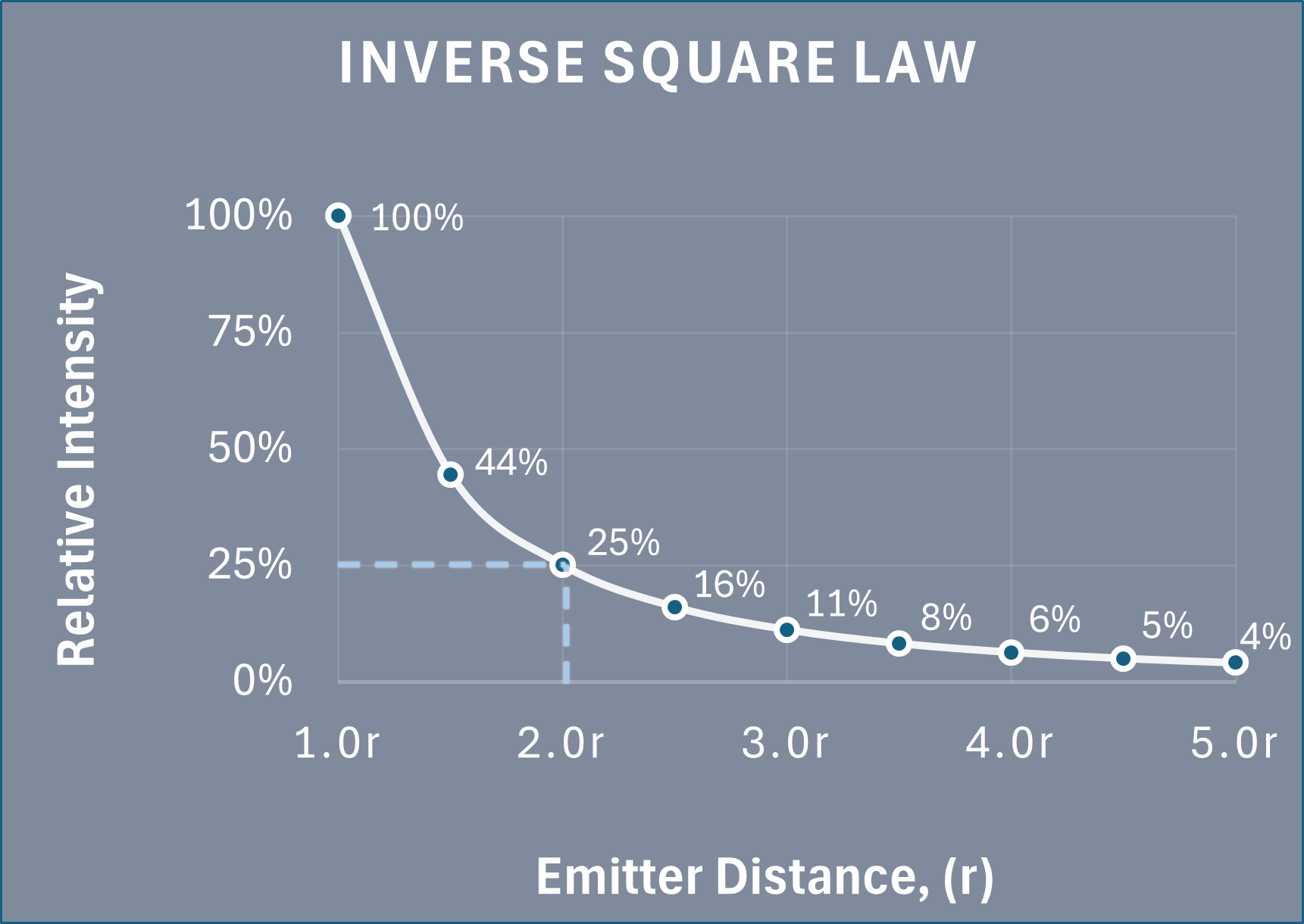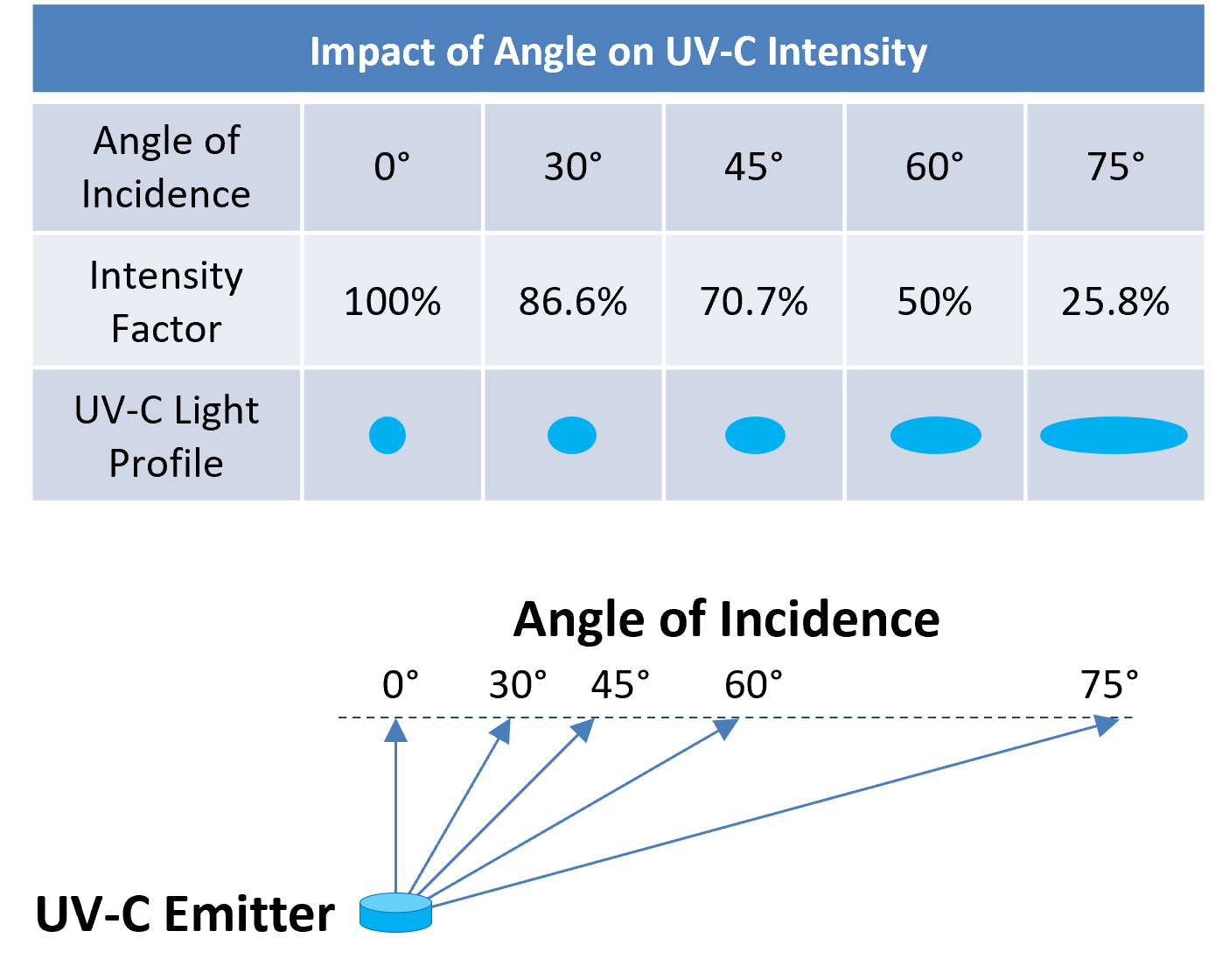The Science Behind UV-C Pathogen Reduction
How UV-C Neutralizes Pathogens
The germicidal ultraviolet (UV-C) bandwidth for disinfection is between 200nm and 280nm. In this range, UV-C is a powerful disinfectant that inactivates bacteria, viruses, and fungi at the genetic level. When exposed to UV-C, a pathogen’s DNA or RNA absorbs the light energy, causing structural damage that blocks its ability to replicate or function.
This process—rapid, residue-free, and chemical-free—stops pathogens in their tracks, making UV-C an ideal solution for fast, high-efficiency surface disinfection. Although UV-C is extremely effective in killing pathogens, direct contact is harmful to human eyes and skin.
Surface disinfection efficacy is directly related to the cumulative UV-C dosage delivered to the intended target. This is the amount of energy, in Joules (J), impacting a known surface area, in square centimeters (cm2). The equation for UV-C dosage is:
UV-C Dose (J/cm²) = UV-C Intensity (W/cm²) × Exposure Time (seconds)
Intensity is most influenced by the UV-C source wavelength, distance from UV-C emitter to the intended target, and the angle at which the UV-C rays impact the target.
UV-C Disinfection Efficacy Factors
Emitter design plays a critical role in maximizing intensity—specifically through wavelength, distance to target, and incident angle. Recognizing these factors is key to improving overall disinfection performance.
Emitter Wavelength
Emitter wavelength plays a significant role in pathogen disinfection effectiveness. The wavelength most easily absorbed by nucleic acids, and therefore the most effective at inactivating a wide range of DNA, is 265 nm.
UV-C emitters are available in Low Pressure Mercury (LPHg), Medium Pressure Mercury (MPHg), and LED formats. While LPHg and MPHg sources exhibit narrow spectral power distributions (SPDs), UV-C LEDs offer broader SPDs, enhancing overall disinfection effectiveness.
LPHg bulbs often standardize on an emitted peak wavelength of 253.7 nm, whereas UV-C LEDs are available in various peak wavelengths—including 222 nm, 265 nm, and 285 nm—allowing for tailored spectral targeting based on microbial susceptibility.
The reduction in E. coli varies significantly between peak wavelengths. Comparative testing shows a substantial difference in log and percentage reduction between a 254 nm UV lamp and a 266 nm LED at equivalent dosages, as illustrated in the table and bar chart below.
Emitter Distance
Emitter-to-surface distance significantly affects UV-C disinfection efficacy. According to the Inverse Square Law, radiation intensity decreases proportionally to the square of the distance from the source.
Therefore, doubling the distance between the emitter and target surface reduces UV-C intensity to one-fourth. This substantially diminishes the delivered dosage and overall disinfection performance.
Angle of Incidence
Similarly, the angle of the UV-C light upon the intended target directly impacts disinfection effectiveness.
Maximum intensity and the greatest germicidal effect occurs when UV-C light strikes a surface perpendicularly, or at 0°.
As the angle of incidence increases, the germicidal effectiveness decreases. This is because the same amount of UV-C energy is distributed over a larger surface area, reducing the intensity per unit area.







